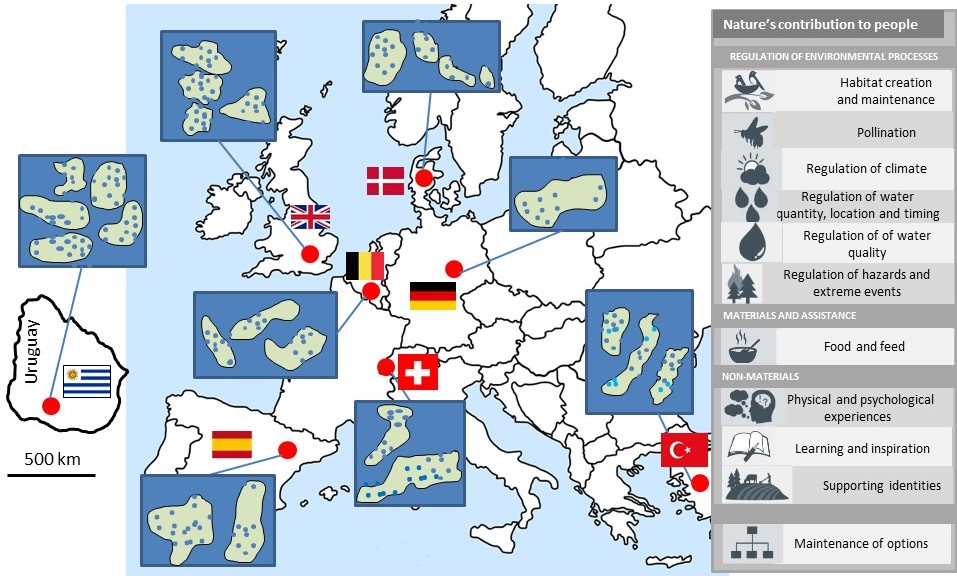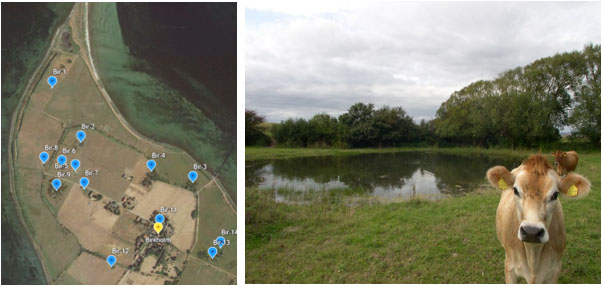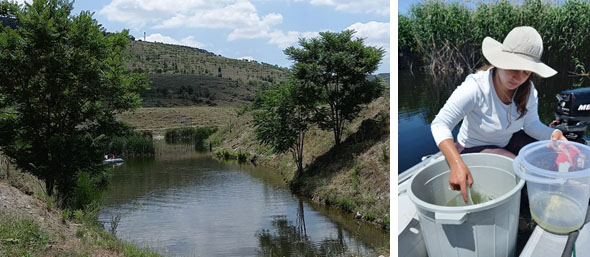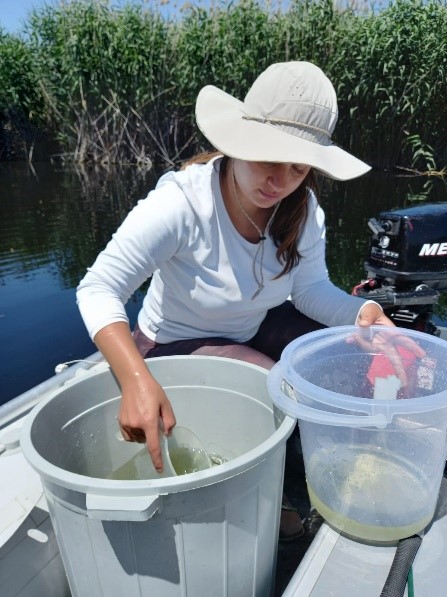In PONDERFUL, the DEMO-sites are pondscapes where Nature-based Solutions (NbS) have been implemented at local (pond level) or regional (network of ponds) scales.
The PONDERFUL DEMO-sites are located in seven European and one CELAC country (Uruguay) after a selection process conducted in close collaboration with the stakeholders. They represent four bioclimatic regions, and are situated in varied landscape types (intensive farmland, woodland, extensive grassland, urban, coastal). The selected pondscapes are very diverse and cover areas from 0.1 to 30 km2 including congregations of 10 to 200 ponds. This diversity is representative of the multitude of types of pond networks existing in our landscapes, as well as the uses associated with them.


A pondscape selected as DEMO-site for Denmark (Fyn Islands). At this site, a network of 19 pond in the agricultural landscape of the island Birkholm have been created or restored. This NbS provides various ES-NCP, particularly habitats for biodiversity (the sites are in Natura 2000 network) and a water source for the cattles grazing the site.
What are pond or pondscape Nature-based Solutions?
There are broadly four types of pond/pondscape Nature-based Solutions (NbS):
- pond creation (in a place where ponds where formerly not present),
- pond restoration (in a place where ponds where formerly present),
- pond management actions (within the ponds, or on areas surrounding the ponds),
- pondscape-scale management actions (e.g. removing pollution sources).
Collectively, all NbS implemented in a pondscape may potentially enhance the pondscape performance for providing ES/NCP.

This Nature-based Solution is the creation of a new pond, contributing to increased pond density in a pondscape near Geneva (Switzerland). One of its function is to buffer runoffs and water flow to protect nearby river. The new pond will also provide a habitat for biodiversity, especially for aquatic plant, invertebrate and amphibian.
Assessment of the benefits of the implemented Nature-based Solution
The key question is whether pond NbS have an important role for climate adaptation and mitigation and so should be encouraged and more widely implemented. This assessment of each pondscape, starting in 2021 and continuing in 2022, is based on three pillars:
- biodiversity assessment,
- assessment of the other ES/NCPs at the pondscape,
- a cost-benefit analyses of pond NbS.
This assessment follows a protocol developed by the PONDERFUL project team to measure several indicators and requires the collation of existing information about pondscape DEMO-sites. The indicators have been selected from the Handbook for practitioners for the evaluation of the impact of Nature-based Solutions and are aligned with the PONDERFUL protocol developed for the biodiversity assessment.

Assessment of zooplankton diversity in a pond from the pondscape “Imrahor River Valley ” in Turkey. Zooplankton diversity is an indicator of biodiversity, as are water plants, invertebrates, amphibian and fish. This metric is integrated in a broader set of indicators, for assessing the ES/NCPs provided by this pondscape.
Toward a databases on pond-pondscape Nature-based Solutions!
To support stakeholders in the implementation of pond/pondscapes Nature-based Solutions in Europe and CELAC, PONDERFUL is proposing to create a database of examples of pond NbS that have successfully provided mitigation and adaptation to climate change. To populate the database, we are currently developing an online survey about the role of ponds and pondscapes as NbS. The responses will provide the basis for the database. All PONDERFUL participants are encouraged to respond to this questionnaire with information about their pond and pondscape study sites (both stratified sampling sites and DEMO-sites). In a second stage, the survey will be largely distributed outside the project team throughout Europe and CELAC. Once populated with best practice information from a wide range of pondscapes, the final database will be made available stakeholders and contributors on open-access platforms.

